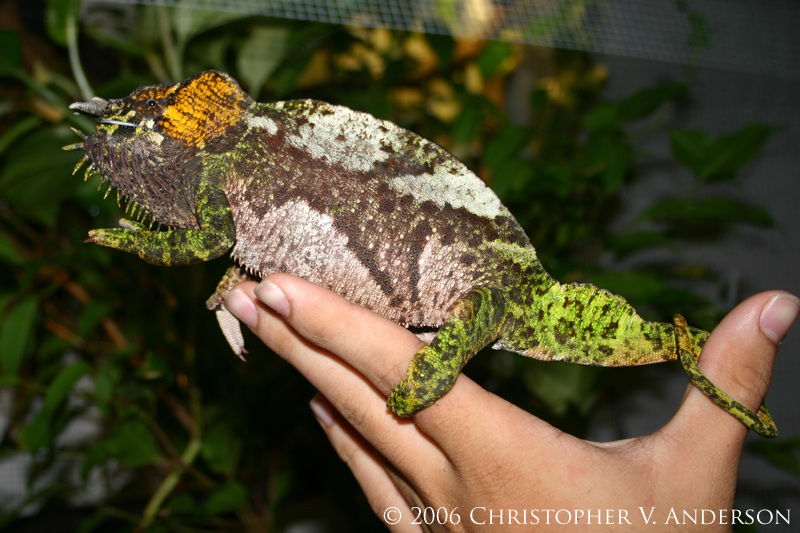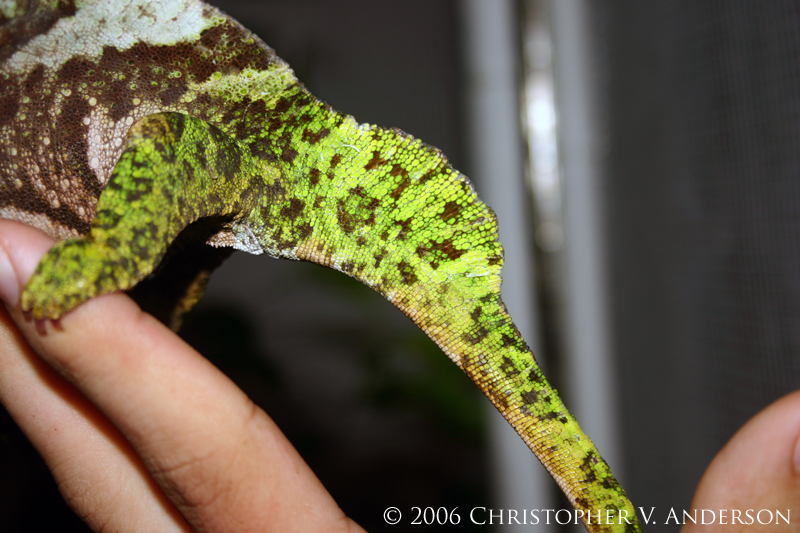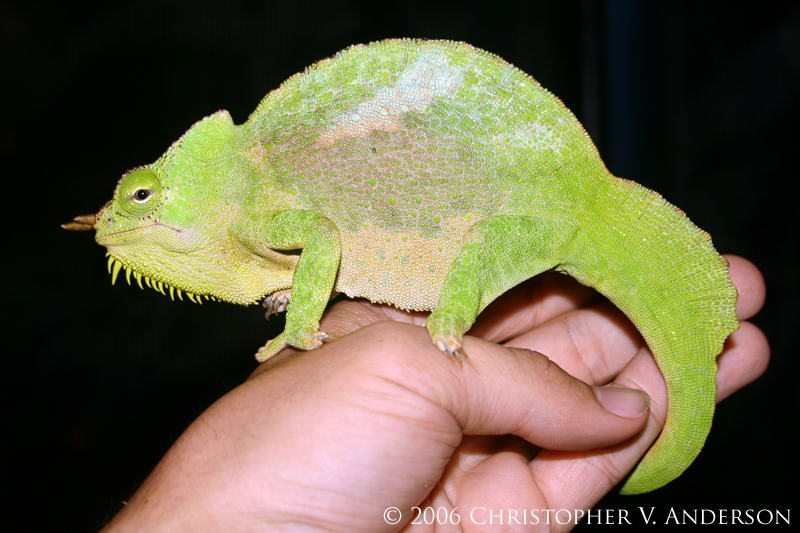Navigation
Install the app
How to install the app on iOS
Follow along with the video below to see how to install our site as a web app on your home screen.
Note: This feature may not be available in some browsers.
More options
You are using an out of date browser. It may not display this or other websites correctly.
You should upgrade or use an alternative browser.
You should upgrade or use an alternative browser.
My new chams, Trioceros quadricornis gracilior
- Thread starter Eszzie
- Start date
eisentrauti
Avid Member
Wow, great animals ! Do you keep them together as a group ? From whom did you get him ?
Benny
Benny
Peter Kraemer
New Member
Hi Esther,
beautiful chameleons!!!!
How do you keep them in the winter (cage, cage-size)?
Greetings, Peter
beautiful chameleons!!!!
How do you keep them in the winter (cage, cage-size)?
Greetings, Peter
Vampire.queen
New Member
They look so awesome!
Good luck with their breeding!
Good luck with their breeding!
Eszzie
New Member
Thnx  I can't remember the guy's name but he's well known by my boyfriend, the guy we bought them from was from Germany. As my boyfriend usually gets his dwarfs from him he knows the animals are in good shape. They are WC but these people threat the animals them very well.
I can't remember the guy's name but he's well known by my boyfriend, the guy we bought them from was from Germany. As my boyfriend usually gets his dwarfs from him he knows the animals are in good shape. They are WC but these people threat the animals them very well.
I have the male seperated from the 2 females. The 2 females are together in a cage 1m x 1m x 2m and the male seperated in a cage same size. They are still outside when the weather is right but they will go into our cellar later on. We bought the new Zoomed ReptiBreeze screen cages.
I have the male seperated from the 2 females. The 2 females are together in a cage 1m x 1m x 2m and the male seperated in a cage same size. They are still outside when the weather is right but they will go into our cellar later on. We bought the new Zoomed ReptiBreeze screen cages.
eisentrauti
Avid Member
Nice enclosure size !!!
Eszzie
New Member
Thanks, we have 4 of these enclosures outside. 1 with 2 quadri females, 1 with quadri male, 1 with an 8 year old veiled male and 1 with a 2 year old veiled male.
Furthermore we have flexariums with Trioceros montium, Bradipodion Thamnobates and more. Most of them are inside the cellar right now but 1st week of October everything goes inside again.
Furthermore we have flexariums with Trioceros montium, Bradipodion Thamnobates and more. Most of them are inside the cellar right now but 1st week of October everything goes inside again.
Chris Anderson
Dr. House of Chameleons
Beautiful animals but I do not think they are Trioceros quadricornis gracilior. Based on the shape and size of the horns and the sail fin on the base of the tail, and their coloration, they appear to be Trioceros quadricornis quadricornis.
Chris
Chris
Eszzie
New Member
We don't know for sure neither, the animals are not yet fully adults and the horns of the male are damaged so we can't see clearly if it has 4 or 6 horns. I will have to find out later, im still doing research on the specie and I know very little about the sub-specie gracilior myself. I'll keep you updated about the progress and findings.
eisentrauti
Avid Member
I thought the same as Chris, but I wasn't sure at all. The number of horns didn't really work to distinguish the subspecies well. The coloration of the claws is also no sure option to distinguish them
eisentrauti
Avid Member
From my knowledge, the best opinions to distinguish them are the coloration of the head (gracilior seem to have a big yellow part behind the eye) and that the fins of the gracilior are smaller.
joshdhensley
New Member
I agree with you two. I don't think they are T.Q.Gracilior either (At least the male) . Very nice, though. Good luck on the breeding.
. Very nice, though. Good luck on the breeding.
Sang
New Member
Beautiful animals but I do not think they are Trioceros quadricornis gracilior. Based on the shape and size of the horns and the sail fin on the base of the tail, and their coloration, they appear to be Trioceros quadricornis quadricornis.
Chris
i thought only gracilor had the peach coloration, while quad quad had alot more silvers/ greys mixed into the body..
then again, what do i know?
Kent67
Retired Moderator
Unless you know what population they were collected from, I think the only way to really know the difference is based on lung and hemipenal morphology. Personally, I'm starting to believe the "red-headed" or "orange-clawed" quads are just a different locale of the nominate subspecies. Necas' book has a photo of a T. q. gracilior male (pg 203) and its coloration and growth pattern of the 2nd set of horns are quite different from anything I've ever seen imported to the US. So far I haven't seen any that looked like that in European collections either.
Chris Anderson
Dr. House of Chameleons
Sang - Unfortunately using coloration to differentiate is rarely reliable. I've seen photos of both species with silver/grey coloration. You really need to look at the morphology. Unfortunately females are not nearly as easy.
Kent - According to the description of T. q. gracilior (Böhme & Klaver, 1981), the horns of T. q. gracilior are relatively longer and narrower then in T. q. quadricornis and the sailfin is shorter and tappers into the tail more smoothly.
T. q. gracilior:


T. q. quadricornis:

Eszzie - Glad we were able to help you learn more about them! They are an interesting species.
Chris
Kent - According to the description of T. q. gracilior (Böhme & Klaver, 1981), the horns of T. q. gracilior are relatively longer and narrower then in T. q. quadricornis and the sailfin is shorter and tappers into the tail more smoothly.
T. q. gracilior:


T. q. quadricornis:

Eszzie - Glad we were able to help you learn more about them! They are an interesting species.
Chris
Last edited:
eisentrauti
Avid Member
In my opinion their coloration is too variable to use it as a sure method to distinguish the subspecies. The male from Chris seems to have all the morphological details which are typical for the subspecies gracilior, but as Kent said it could be as well only regional populations.
I still doubt that there are real graciliors in the hobby, especially since I get to know from a few guys that they sell their quad.quads as graciliors to make more money
I still doubt that there are real graciliors in the hobby, especially since I get to know from a few guys that they sell their quad.quads as graciliors to make more money
Similar threads
- Replies
- 15
- Views
- 3K
- Replies
- 38
- Views
- 2K














